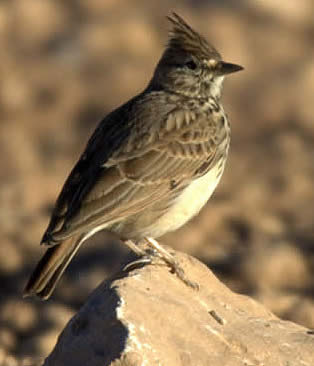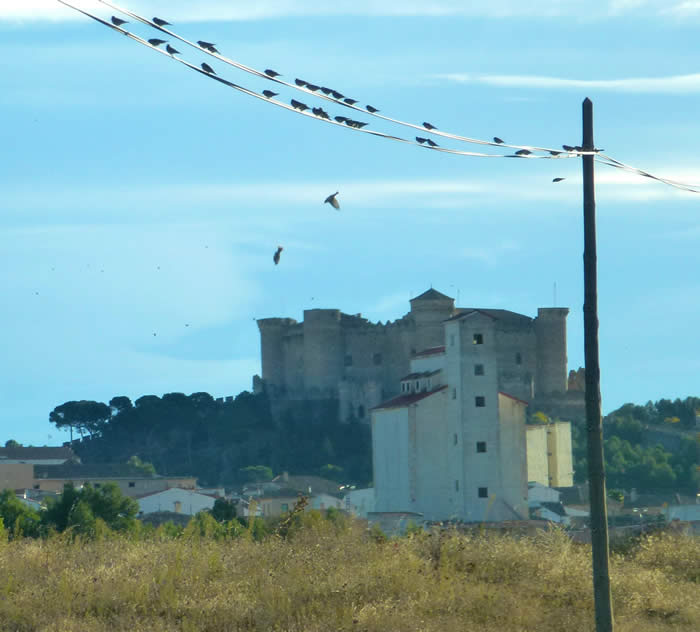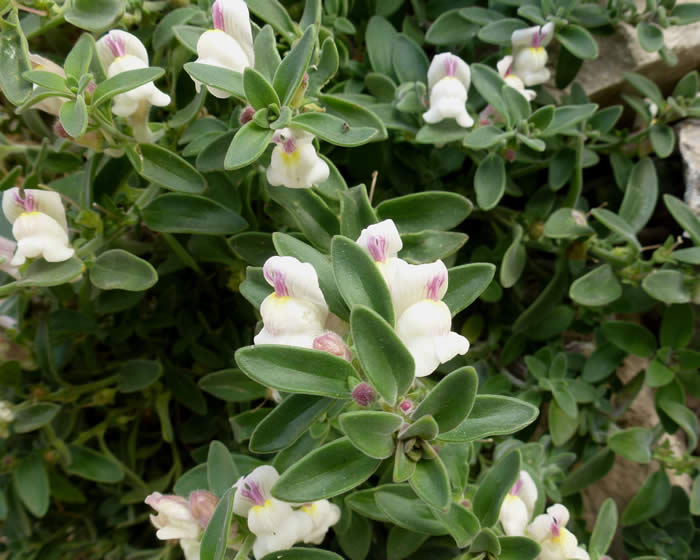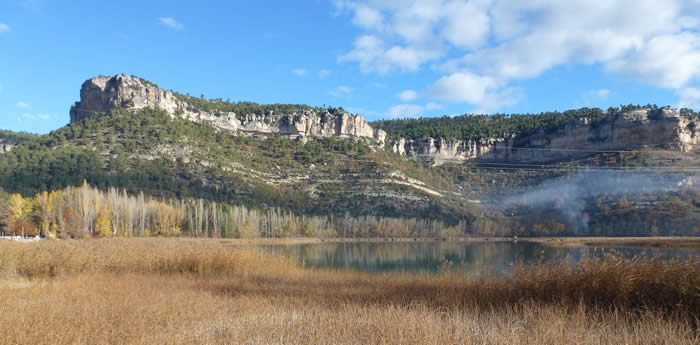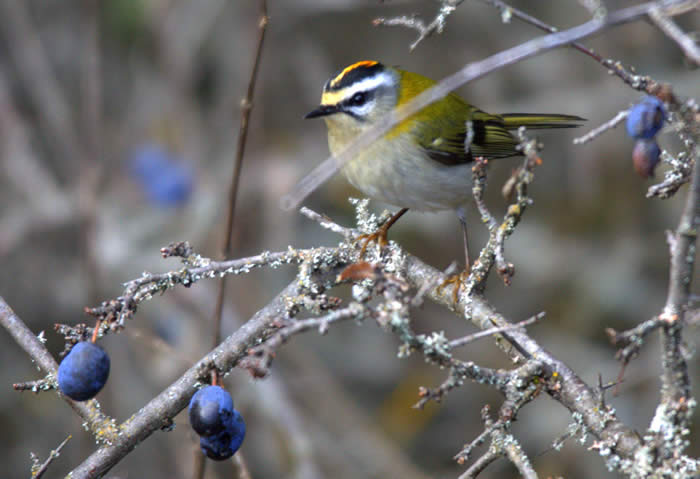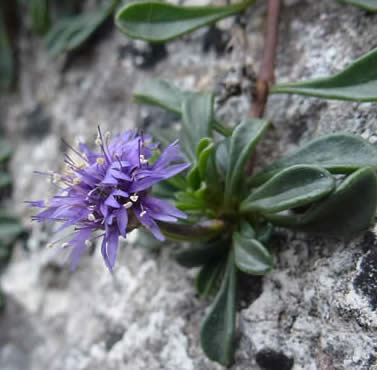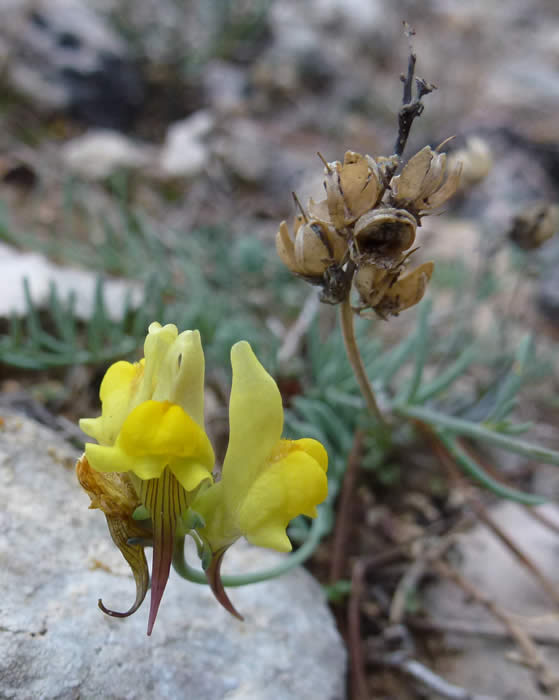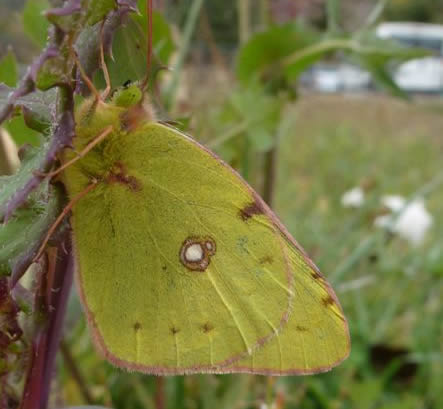La Mancha
Nature in the land of Don Quixote
La Mancha may lack the fame of other parts of Spain when it comes to natural history, but with the right local knowledge there are places and wildlife to discover in one of the least known areas of the country.
There are two main focuses of this holiday, with two holiday bases. The first is La Mancha Húmeda, the second the limestone hills of the Serranía de Cuenca Natural Park.
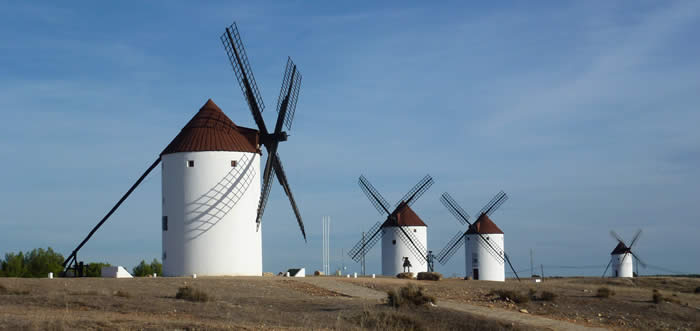
Don Quixote's windmills
La Mancha Húmeda
Las Tablas de Daimiel National Park is a chain of wetlands at the confluence of the rivers Guadiana and Gigüela, the core of the Biosphere Reserve of La Mancha Húmeda. There’s a superbly restored watermill and a mix of water bodies, flooded valleys and reedbeds, with good access for visitors. Wildlife management includes breeding and reintroducing wildfowl, especially marbled ducks.
Las Tablas de Damiel National Park
Farmland near Belmonte has many wintering passerines, including Thekla larks and flocks of rock sparrows. There are great bustards, too, but they are elusive. The lagoon of Manjavacas retains water year-round. Beyond the saltmarsh vegetation of sea-blite, samphire and saltwort the lagoon has waders, wintering ducks and other birds on the marsh fringe.
Our base for three nights is the Hospedería Real La Beltraneja. This is in Belmonte, which has two places not to be missed. The restored Belmonte Castle is where the ‘El Cid’ was filmed and is steeped in history, ancient and modern. On a nearby hilltop are the windmills that feature in the story of the travels and eccentricities of Don Quixote.
Serranía de Cuenca Natural Park
The rugged hills of the Serranía de Cuenca offer a marked contrast. Juniper, berberis and Montpellier maple show we’re on limestone. Some of the rich mix of flowers should still be in flower, such as the endemic snapdragon Antirrhinum pulverulentum.
Griffon vultures are common and there are choughs, for example at the viewpoint called Ventana del Diablo, the Devil's Window. The Laguna de Uña is an attractive reed-fringed lake with wintering ducks and birds of deciduous woodland such as firecrest and short-toed treecreeper. Higher, pines predominate, with the prospect of groups of ‘chipping’ crossbills. There are pretty mountain villages and walks with waterfalls.
The most dramatic feature is Los Callejones of Las Majadas, an astonishing collection of mushroom-like limestone towers and pavements worn into shape by rainwater through the ages, the Natural Park’s showpiece of geomorphology. Physically, it’s impressive and the limestone labyrinth’s rockfaces support plants more typical of the Pyrenees, such as a rock-clinging dwarf buckthorn Rhamnus pumilus, creeping globularia, amelanchier and Pyrenean toadflax.
Licensed to thrill: Los Callejones of Las Majadas features in the James Bond movie The World is Not Enough.
Our base for four nights here is the Hotel El Tablazo in Villalba de la Sierra, which has an adjacent fishing lake.
Honeyguide’s recce was in November, and October will offer a bigger range of flowers and butterflies, with much to be discovered by the pioneering Honeyguide group here.
Birds
In addition to those mentioned above, cattle and little egrets, purple swamp-hen, black-winged stilt, little owl, crested lark, alpine accentor (with luck), fan-tailed and Sardinian warblers, crested tit, Iberian grey shrike, spotless starling, rock bunting.
Plants
Sarcocapnos enneaphylla is an unusual member of the poppy family flowering in autumn. The Serranía de Cuenca has a near-endemic butterwort Pinguicula mundi, though not in flower in autumn. Others include the cinquefoil Potentilla caulescens, Helianthemum origanifolium and scrambling gromwell.
Other wildlife
There’ll be some late butterflies, including clouded yellows and long-tailed and Adonis blues. Dragonflies round the wetlands and Iberian wall lizard should be in good numbers.
Conservation project
Our leader Pau’s ringing group Grupo de Anillamiento Pit-Roig runs bird ringing stations in Valencia.
 |
The group is studying the survival rate and dispersion of moustached warbler. Data loggers placed on Savi’s and reed warblers are tracking their migratory movements, provided they can be trapped again and the data downloaded. Support pays for nets and other ringing equipment. Recent highlights in the group's work are described in our La Mancha holiday report from October 2014. |
Holiday details
Price: £1,430 per person in twin room for a full week (Tuesday to Tuesday)
Single room supplement: £100
En suite facilities
Flights: Scheduled easyJet flights Gatwick to Valencia.
Deposit: £300
Maximum number (two leaders): 14
Leaders
Pau Lucio lives near Valencia and runs a wildlife tour company Birdwatching Spain. Pau is involved in conservation projects on bird migration and the importance of Spanish coastal wetlands for species such as the moustached and Savi’s warblers. Pau has collaborated with SEO/Birdlife and spent nine months at the Wildfowl & Wetlands Trust at Slimbridge. He also works at a nature reserve where he guides visitors through the forest and marshes.
Chris Durdin is the driving force behind Honeyguide, running holidays since 1991. For many years he combined this with his work for the RSPB in Eastern England, often the Society’s spokesman, but has been concentrating on Honeyguide full-time since 2009. Chris is the co-author of a book about Norfolk’s cranes. He’s also a qualified soccer coach, for one son’s under 12 year group. As a naturalist, Chris is an all rounder.





